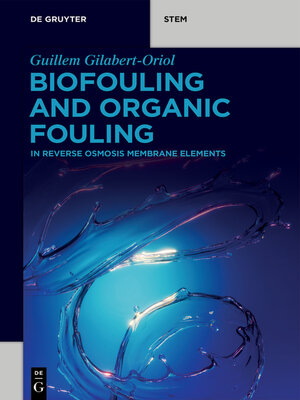Biofouling and Organic Fouling in Reverse Osmosis Membrane Elements
ebook ∣ De Gruyter STEM
By Guillem Gilabert-Oriol

Sign up to save your library
With an OverDrive account, you can save your favorite libraries for at-a-glance information about availability. Find out more about OverDrive accounts.
Find this title in Libby, the library reading app by OverDrive.



Search for a digital library with this title
Title found at these libraries:
| Library Name | Distance |
|---|---|
| Loading... |
Since the inception of reverse osmosis and nanofiltration membranes in the seventies, biological fouling, also known as biofouling, still remains as the key challenge to get solved so that membranes can run smoothly and without issues in desalination and water treatment plants. Biofouling occurs when certain bacteria attach to the reverse osmosis membranes, and starts building a biofilm. This is a key problem, as if this quickly growing biofilm is not properly taken care of, it can affect the mechanical integrity of the reverse osmosis membrane elements, and damage them irreversibly. Organic fouling occurs when organic matter deposits into the membrane, thus reducing its permeability. Both phenomena are interconnected. This books provides an understanding on why biological fouling occurs, what variables affect its development, and what can be done to mitigate its impact.







